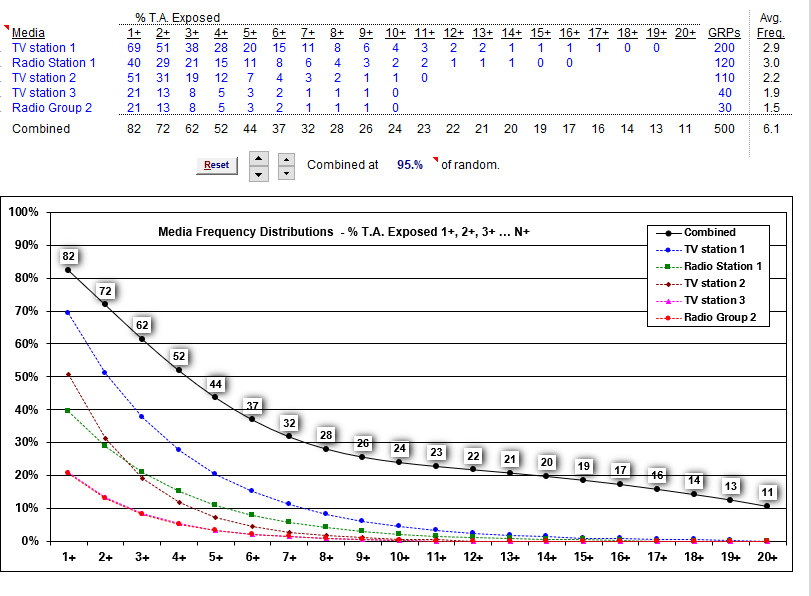Here are the top three reasons why this media analysis should not be overlooked
An Exposure Analysis is typically a frequency distribution that is produced to quantify the percent of the total target audience exposed to an advertising message one or more times (1+), two or more times (2+), three or more times (3+), etc.
An Exposure Analysis is important because it’s one of the few ways that a business can assess how many messages (from different sources) a prospect will receive over the course of a campaign.
Unfortunately, I have rarely seen a local television station, radio station, or even a local agency, share an Exposure Analysis with their client so the client can see how all their advertising works in concert.
Here are the top three reasons why this media analysis should not be overlooked:

- An Exposure Analysis combining all media will show what portion of the target audience is hearing the advertising message for a set period. If you track your sales monthly, then try looking at your Exposure Analysis for one month. How many times do you think your prospects need to hear your message to be motivated enough to contact you? Is one time, two times, three times, or six times enough? If you’re not sure, find some industry benchmarks and compare your exposure levels to what is recommended in your business category.
- An Exposure Analysis that looks at the combined effect of all your media will also show the frequency level by channel/platform. This is a good way to see if you have enough individual frequency on each platform to motivate that specific audience. “Why does this matter?” some may ask. Simply put, if your frequency level is so low on a single station that their audience won’t recall your message, it’s likely that the campaign is not going to be very effective. It’s better to buy the optimum frequency on one station, rather than to be spread too thin across several stations.
- An Exposure Analysis is a way of equalizing all advertising a business is doing across multiple platforms. Sure, the first glance is focused on radio advertising plus TV advertising and how many messages the target audience will see and hear. However, it IS possible to add non-broadcast exposures into the analysis! This means that billboards, newspapers, and other impression-related advertising can be included in the exposure estimates. This is a great way to quantify how everything is working together to reach potential customers.
In closing, an Exposure Analysis is a fantastic tool to determine if the marketing plan is delivering the number of desired messages to the target customers. While it is not a silver bullet, it certainly beats the heck out of wondering if the advertising budget is giving the company the coverage it wants. If you want to find out more about how an exposure analysis can inform your media planning and increase your ROI, contact me at Tanya@SecretWeaponMediaAgency.com

